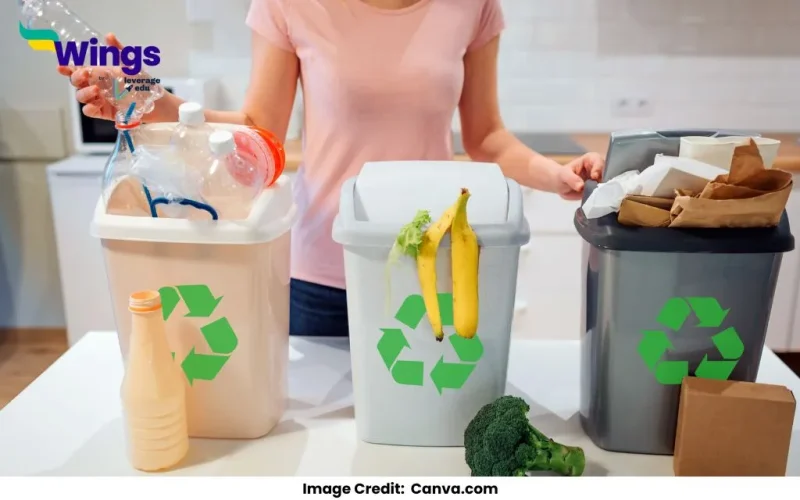Answer
Verified
Biodegradable waste decomposes naturally through microorganisms, returning to the environment without harm (e.g., food scraps, paper). Whereas, non-biodegradable waste does not decompose easily, persisting for years and causing pollution (e.g., plastic, glass). Proper disposal is crucial for sustainability.
Complete Answer:
Here are the difference between biodegradable and non-biodegradable waste:
| Particulars | Biodegradable Waste | Non-Biodegradable Waste |
| Definition | Waste that can be broken down naturally by microorganisms. | Waste that does not decompose or decomposes very slowly. |
| Examples | Food scraps, paper, garden waste, wood, cotton, leather. | Plastic, glass, metals, synthetic fibres, rubber. |
| Decomposition Time | Decomposes in days, months, or a few years. | Takes decades to centuries to break down, if at all. |
| Energy Consumption | Minimal energy is required to decompose naturally. | High energy is required for recycling or disposal. |
| Disposal Methods | Composting, burial in landfills, or natural decay. | Recycling (for some), incineration, or landfilling. |
| Recyclability | Cannot be recycled but can be composted or used for organic waste management. | Many types are recyclable, but not all (e.g., plastics can often be recycled, but not always). |
| Renewability | Renewable through composting or natural processes. | Non-renewable in the sense that it cannot be returned to nature quickly or easily. |
| Toxicity | Non-toxic when decomposed naturally (unless polluted). | Can release toxic chemicals when decomposed, incinerated, or when exposed to sunlight. |
| Impact on Environment | Natural decomposition returns nutrients to the soil. | Can persist in landfills for a long time, harming wildlife and polluting ecosystems. |
| Impact on Soil | Enriches soil by adding nutrients, improving fertility. | Can contaminate soil, leading to reduced soil fertility and harmful leaching into water. |
| Impact on Water Bodies | Does not pollute water bodies significantly if disposed of properly. | Can pollute water, harming aquatic life and ecosystems (e.g., plastic waste in oceans). |
| Impact on Air Quality | Minimal impact on air quality, especially when composted. | Can emit harmful gases if incinerated (e.g., plastic). |
| Impact on Wildlife | Generally harmless when decomposed naturally. | Can pose serious risks to animals (e.g., plastic ingestion). |
| Impact on Air Human Health | Generally safe if disposed of correctly; may harbour pathogens if left unchecked. | Can cause health issues due to the toxins they release into the air, water, or soil. |
Common Doubts:
 60,000+ students trusted us with their dreams. Take the first step today!
60,000+ students trusted us with their dreams. Take the first step today!


 One app for all your study abroad needs
One app for all your study abroad needs










